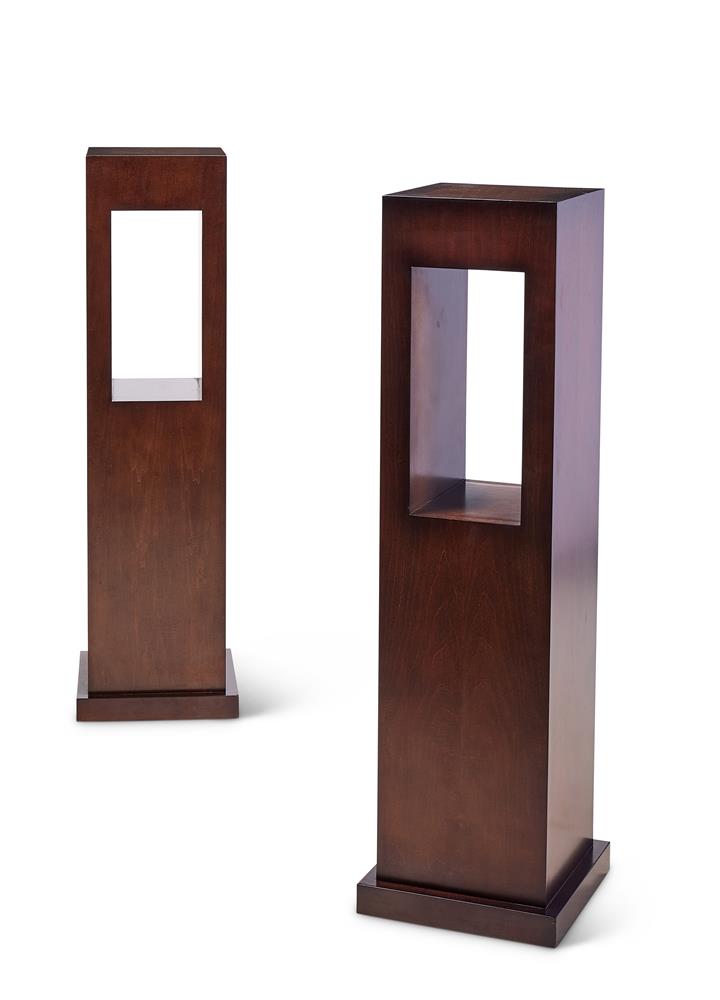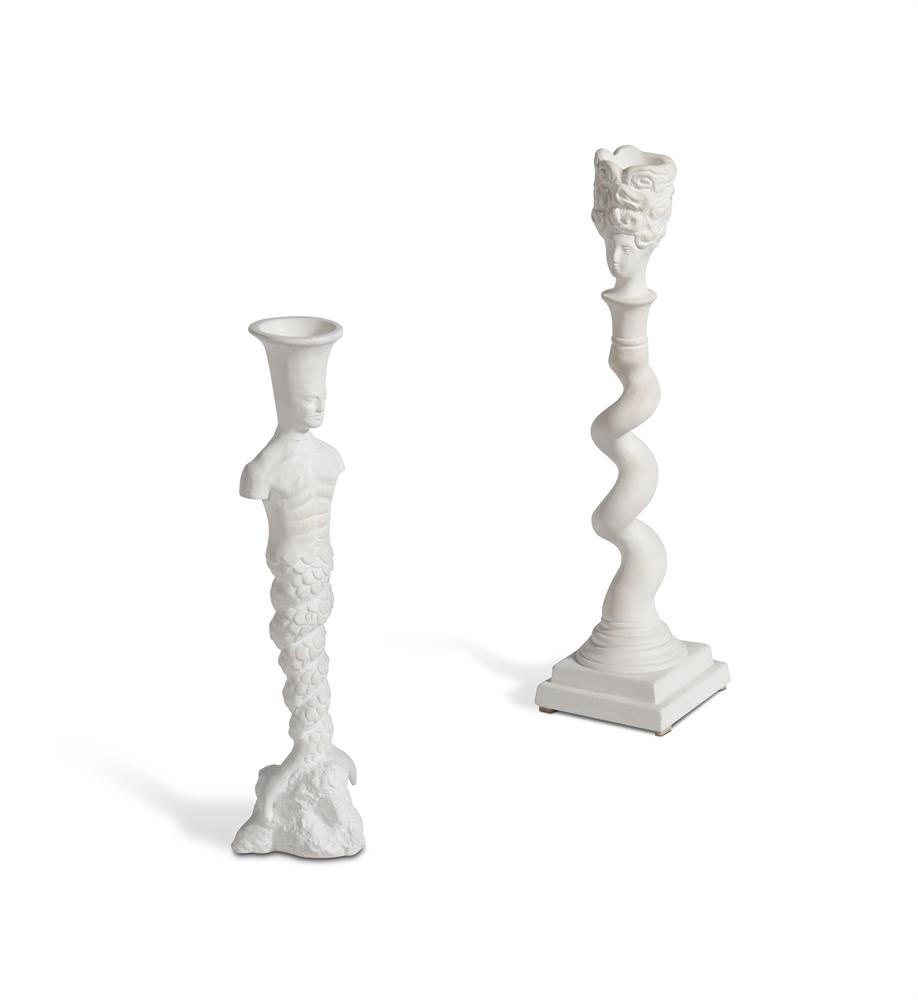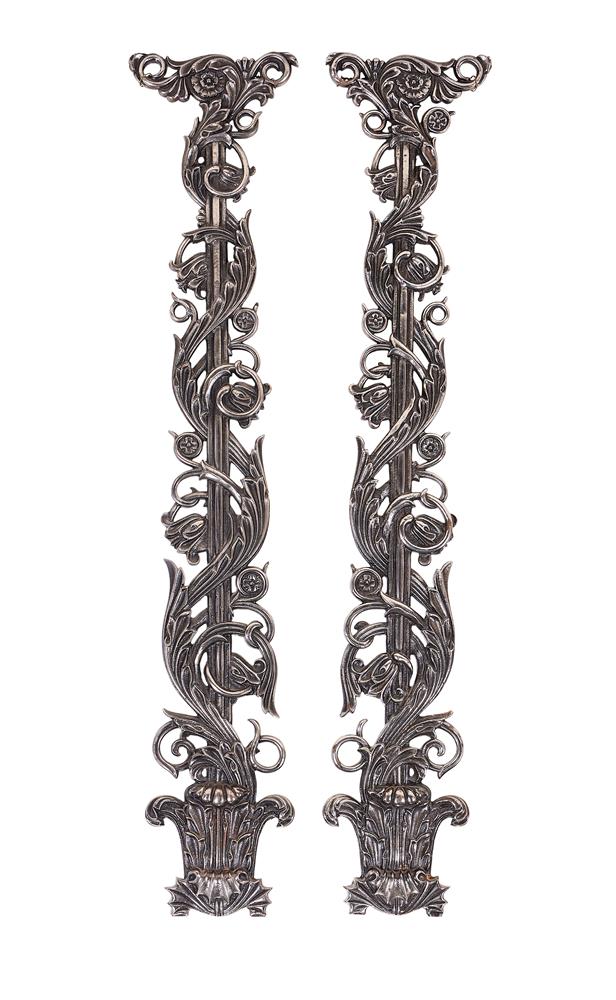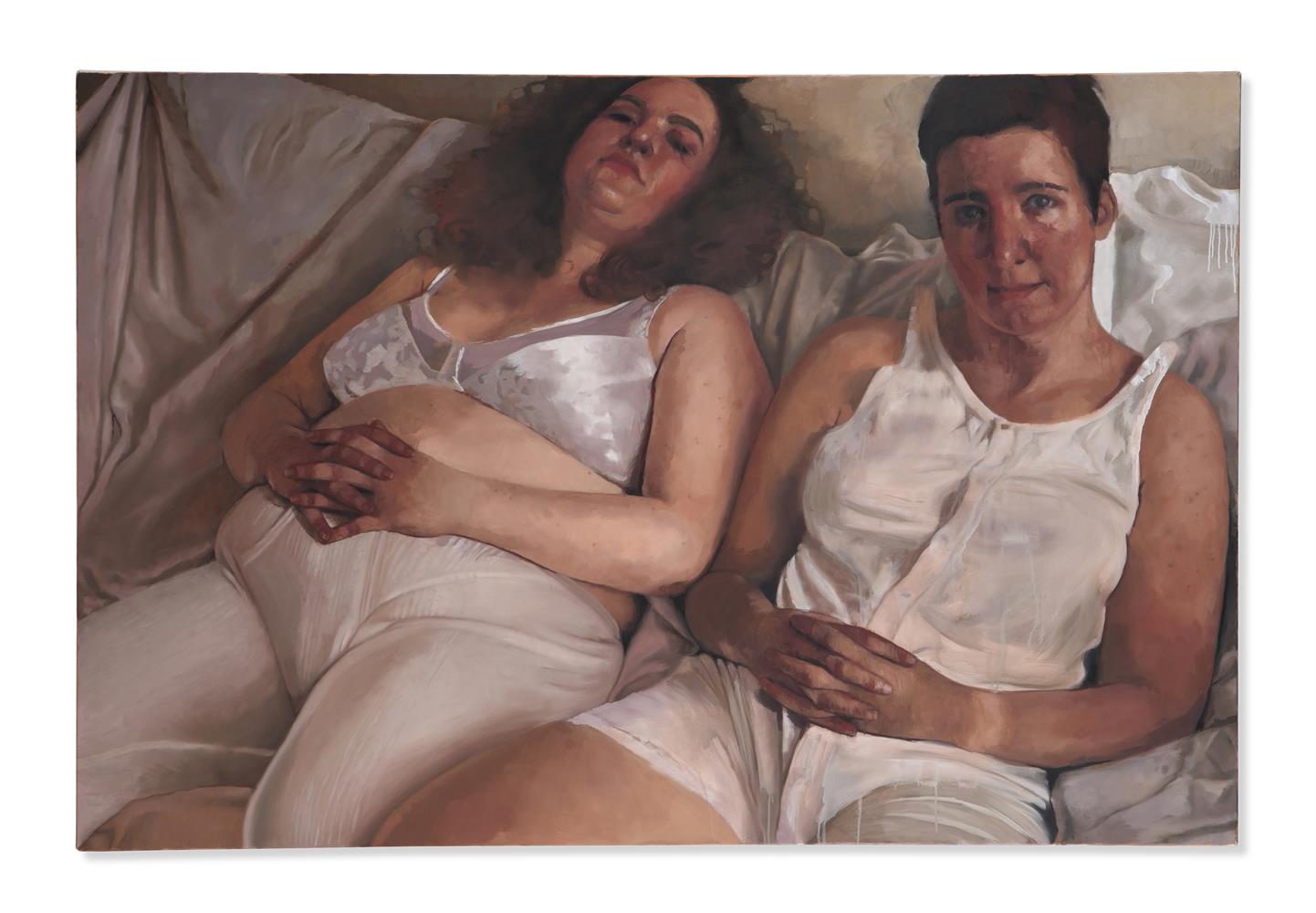A RARE CARVED ROSSO ANTICO MASK IN THE MANNER OF BENEDETTO BOSCHETTI (1820-1860) ITALIAN, LATE 19TH CENTURY The mask or 'mascaron' of Greek theatrical form, set on a polished black marble base overall height 56cm, base 18cm wide, 13.5cm deep Provenance: Daniel Katz Ltd. London, where purchased by Count Manfredi della Gherardesca Benedetto Boschetti (active c.1820-1870) exhibited at the Crystal Palace Exhibition 1851 where he won a medal for a pair of mosaic tables in the Byzantine style, representing the Triumph of Love and the Blessed Soul. The Boschetti workshop at 74 Via Condotti, Rome, was renowned for the exceptional quality of its copies, mostly in marble of Antique vases and objects, for example a rosso antico reduction of the Warwick vase in the Toledo Museum, Ohio (A. Gonzalez-Palacios, Il Tempo del Gusto, Roma e il Regno delle Duo Sicilie, Milan, 1984, Vol II, fig.286). F.S. Bonfigli noted in 1856 that 'The Establishment is particularly conspicuous for its great variety of marble works, bronzes, etc.' (A. Gonzalez-Palacios, The Art of Mosaics, 1982, p.166). Pieces by Boschetti are in many public and private collections, including that of Mario Praz, the famous Italian critic and connoisseur (now held in the Museo Mario Praz, Rome). In Greek theatre of the third and second century BC, all performers, except musicians, wore masks. A full-face character mask would probably originally have been in painted, starched linen when worn on the stage. Much admired- these masks were often reproduced in stone, terracotta or, occasionally as here, in more expensive marbles. Perhaps the best known collection, now housed in the Cortile del Belvedere, Vatican Museums, adorned the odeon (theatre) at Hadrian's Villa. The Grand Tour saw a considerable rise in interest and use of the mask as a decorative device- reaching its apogee in the work of Thomas Hope In part the interest was driven with the publication in the mid-18th century of "Le Maschere Sceniche e le Figure Comiche d'Antichi Romani" by Francesco de' Ficoroni (1664-1747).
A RARE CARVED ROSSO ANTICO MASK IN THE MANNER OF BENEDETTO BOSCHETTI (1820-1860) ITALIAN, LATE 19TH CENTURY The mask or 'mascaron' of Greek theatrical form, set on a polished black marble base overall height 56cm, base 18cm wide, 13.5cm deep Provenance: Daniel Katz Ltd. London, where purchased by Count Manfredi della Gherardesca Benedetto Boschetti (active c.1820-1870) exhibited at the Crystal Palace Exhibition 1851 where he won a medal for a pair of mosaic tables in the Byzantine style, representing the Triumph of Love and the Blessed Soul. The Boschetti workshop at 74 Via Condotti, Rome, was renowned for the exceptional quality of its copies, mostly in marble of Antique vases and objects, for example a rosso antico reduction of the Warwick vase in the Toledo Museum, Ohio (A. Gonzalez-Palacios, Il Tempo del Gusto, Roma e il Regno delle Duo Sicilie, Milan, 1984, Vol II, fig.286). F.S. Bonfigli noted in 1856 that 'The Establishment is particularly conspicuous for its great variety of marble works, bronzes, etc.' (A. Gonzalez-Palacios, The Art of Mosaics, 1982, p.166). Pieces by Boschetti are in many public and private collections, including that of Mario Praz, the famous Italian critic and connoisseur (now held in the Museo Mario Praz, Rome). In Greek theatre of the third and second century BC, all performers, except musicians, wore masks. A full-face character mask would probably originally have been in painted, starched linen when worn on the stage. Much admired- these masks were often reproduced in stone, terracotta or, occasionally as here, in more expensive marbles. Perhaps the best known collection, now housed in the Cortile del Belvedere, Vatican Museums, adorned the odeon (theatre) at Hadrian's Villa. The Grand Tour saw a considerable rise in interest and use of the mask as a decorative device- reaching its apogee in the work of Thomas Hope In part the interest was driven with the publication in the mid-18th century of "Le Maschere Sceniche e le Figure Comiche d'Antichi Romani" by Francesco de' Ficoroni (1664-1747).















Testen Sie LotSearch und seine Premium-Features 7 Tage - ohne Kosten!
Lassen Sie sich automatisch über neue Objekte in kommenden Auktionen benachrichtigen.
Suchauftrag anlegen